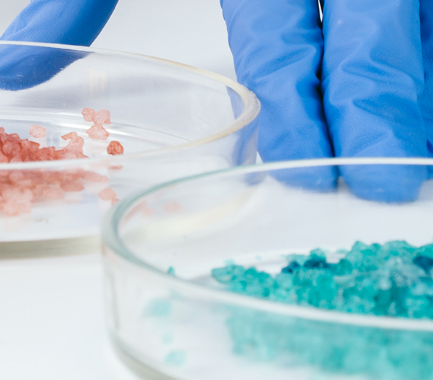Your contact
PENPET-Team - Hamburg

Tim Meister
Sales
Tel. +49 (0) 40 - 675 7 99 40
sales@penpet.de
Get in touch with us.
Methacrylic acid
Methacrylic acid is an organic compound from the group of unsaturated carboxylic acids, which, as a starting material for the production of various plastics, is of great importance for the chemical industry. The substance is mainly obtained in a process in which acetone cyanohydrin reacts with sulfuric acid to form methacrylamide and is then converted to Methacrylic acid or Methyl methacrylate. Alternatively, the compound can be prepared by a two-step oxidation of tert-Butanol and Isobutylene. Methacrylic acid is found naturally in chamomile oil.
Methacrylic acid is primarily used in the production of plastics as part of polymerization reactions. The acid is converted to the corresponding polymethacrylic acid esters with different alcohols.
You can reliably obtain the quantity of methacrylic acid you need from PENPET. We look forward to receiving your inquiry for an individual offer. Delivered as a liquid in tank containers, IBCs or drums.
CAS no. 79-41-4
EINECS no. 201-204-4
Molecular formula: C4H6O2
Synonyms: Methylacrylic Acid, Alpha-Methylacrylic Acid, 2-Methylpropenoic Acid, Isobutenoic Acid, Methacrylic Acid, MAA
Areas of application: Production of plastics, acrylic glass and dispersions, starting material for the production of other monomers for the chemical industry
More Information
Methacrylic acid is an unsaturated carboxylic acid. It differs from the simpler acrylic acid in that it has a methyl group attached to the central carbon atom. The methacrylic acid thus has a branched structure of four carbon atoms. The presence of two reactive structural features at a comparatively small molecular size explains the compound's reactivity and propensity to polymerize. On the one hand, a double bond between two carbon atoms is available for addition reactions. On the other hand, the carboxylic acid-typical carboxy group enables the esterification of the methacrylic acid.
Methacrylic acid is a clear, colorless liquid with an unpleasant, pungent odor. However, their melting point is only slightly below normal room temperatures. In its solid state, the substance forms prismatic crystals. Methacrylic acid is soluble in water, diethyl ether, chloroform and alcohol. In aqueous solution, methacrylic acid has a strong acidic reaction. Metal acrylate salts can be obtained by neutralizing the acidic solution with appropriate metal hydroxides, metal oxides or metal alcoholates.
Methacrylic acid is hardly flammable as a liquid. However, its vapors form highly flammable mixtures with the ambient air. Due to their higher density, they are heavier than air and can spread or accumulate on the ground unnoticed. Methacrylic acid should therefore be kept away from all types of ignition sources. The decomposition of methacrylic acid produces irritating and harmful gases such as carbon monoxide and carbon dioxide.
Methacrylic acid is very easy to polymerize. Corresponding processes can already be initiated by slight heating, exposure to light, the supply of oxygen or the addition of peroxides or hydrochloric acid. Spontaneous polymerization can be very rapid and violent depending on the causal conditions. This can lead to explosive decomposition of methacrylic acid. Consequently, stabilizing storage conditions must be ensured. Methacrylic acid is therefore mixed with stabilizers such as hydroquinone monomethyl ether or hydroquinone in order to retain its monomeric form over a longer period of time. When methacrylic acid solidifies and freezes to form a crystalline solid, the mixing ratio to the stabilizer can change so much that safe thawing is only possible with great care and expert guidance.
Methacrylic acid is toxic. The compound causes irritation and burns on the skin. Even brief eye contact can cause serious damage. Loss of vision is possible. After direct exposure, skin and eyes should be rinsed thoroughly with water and emergency medical treatment sought. Inhalation of methacrylic acid vapors may cause difficulty breathing, severe respiratory irritation and pulmonary edema. Oral ingestion of even small amounts of methacrylic acid can cause severe swelling, serious injury, and death. Perforation of the esophagus or stomach is possible. If the substance is swallowed, rinse the mouth out thoroughly with water and seek immediate medical treatment.
Methacrylic acid is considered to be slightly hazardous to water. The compound must not escape into the environment.
